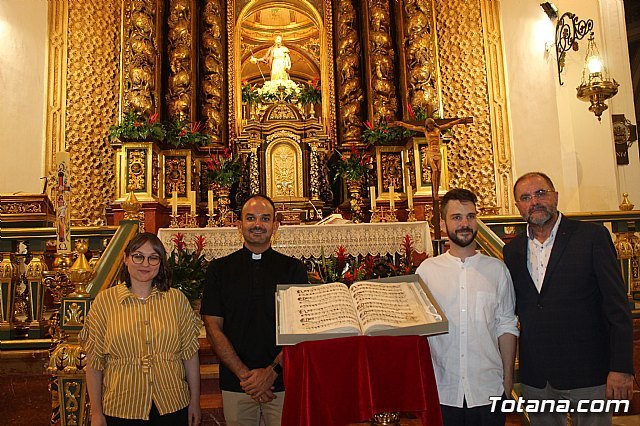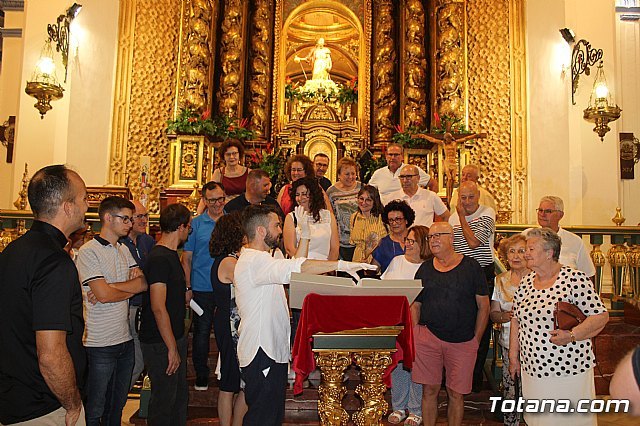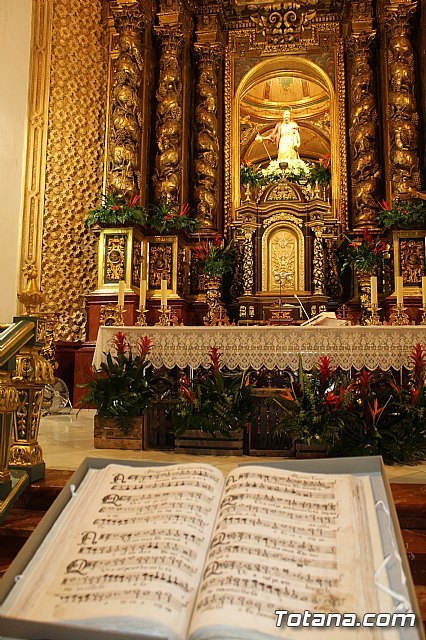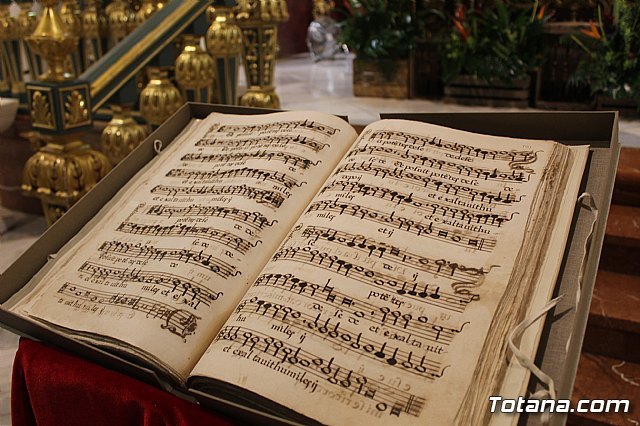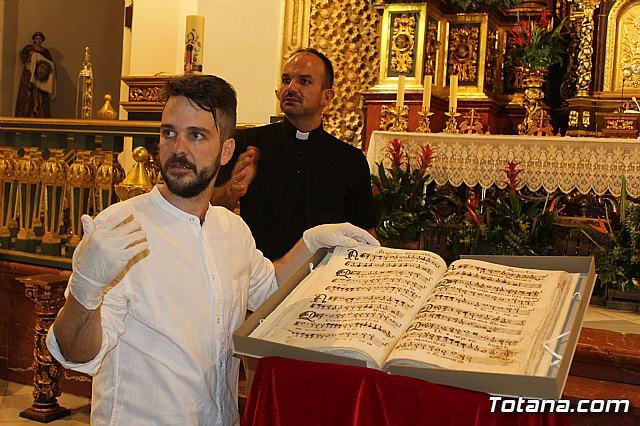The religious program of the patron celebrations of Santiago Apostle opened today a window to the presentation of the Musical Manuscript discovered in the summer of 2017 in the parish of Santiago El Mayor de Totana, which has been recently restored in the General Archive of the Region of Murcia.
The eighteenth-century document was found by the director of the Historical Music Workshop of the University of Murcia, Jorge Losana, who is also director of the Cantoria group and the International Festival of Ancient Music of Sierra Espuña that is celebrated during this month of July.
The event was attended by the mayor of Totana, Juan José Cánovas, numerous members of the Municipal Corporation, the pastor of Santiago, Francisco José Fernández, and patrons of the La Santa Foundation.
Precisely, it has been Jorge Losana, in charge of the presentation of the document, whose finding he also announced earlier this month at the International Congress of Medieval and Renaissance Music in Basel (Switzerland).
It is a work formed by about thirty musical compositions of sacred polyphony, among which are motets, psalms for vespers and two masses.
The finding of the manuscript significantly increases the documentary heritage of Hispanic Renaissance music and after its restoration and digitalization is available to researchers around the world.
The manuscript has undergone a complete restoration since it presented a poor state of preservation as a result of the loss of its covers, in addition to different damages and deteriorations caused by microorganisms.
The restoration that has been done to this polyphonic book has been complete: it began with its unbinding and dry cleaning, and then the wet processes were carried out - washing, deacidification, reintegration and consolidation and, finally, sewing and binding, following The same original structure.
In addition, for its conservation it has been made a custom conservation box and special protections.
In its pages works of possible Valencian origin coexist with other compositions of authors of the 16th century around Seville, Cordoba and Granada.
The works have the usual layout of the Renaissance choir books, where each part is written separately from the others in a corner of the sheet, with the high pitched voices (cantus and tenor) on the left side and the bass parts (altus and bassus) on the right page.
Because of its size, the document could have been used as a facistol book, large scores that can be read remotely by the entire group of singers and instrumentalists (ministriles), with which the plain song and polyphony were interpreted during the liturgical celebrations .
In its pages, works of possible Valencian origin coexist with other compositions of authors from the surroundings of Seville, Córdoba and Granada.
Collect motets and psalms from Francisco Guerrero, Ceballos, Santos de Aliseda, Tornel and Magister Pontac and other small anonymous pieces, in addition to seven psalms and nine versions of magnificats by Juan Navarro.
Among all the works of the document, one of the psalms stands out for scientific relevance: the Beatus vir, attributed to Ceballos, which had not been found so far by any scientist.
It is possible, therefore, that it is a score that had been lost for centuries and is only found in the Totana Manuscript.
The Cantoria group and the ECOS Ensemble, directed by Jorge Losana, will interpret the most significant works of the manuscript at the International Festival of Ancient Music of Sierra Espuña, which is celebrated this July.
From the Workshop of Historical Music of the University of Murcia, a program of informative activities will be developed to make this discovery known, which increases the enormous documentary heritage of Hispanic Renaissance music.


